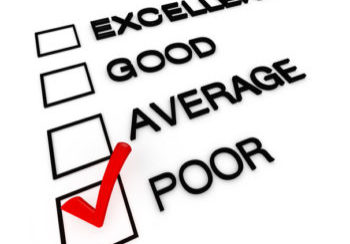
China’s Future Competitive Environment
‘No Time for Losers’—Is Samsung a precedent?
Note: This article is part three of a three part series. The first article is “We Aren’t The Champions: Achieving Success As A Second Mouse.” The second article is “The Future Market For Second Mouse Companies.”
In the first two parts to this article, we wrote about how a number of highly-successful Chinese companies have achieved their results not by emulating the Early Bird that catches the worm, but rather by emulating the Second Mouse that gets the cheese. In our review of these Chinese Second Mouse companies, we concluded that they were not merely viable from an economic perspective, but were in fact prospering. Borrowing from the song made popular by Queen, we concluded that while these firms “Aren’t the Champions” from the traditional perspective of leadership in design, technology and features, they could in fact be quite proud of their accomplishments as Second Mouse companies.
In the second part of the article, we examined whether future market evolution, rather than economic woes, might force them to abandon the Second Mouse business model and begin to evolve to be more like their western competitors. Our conclusion was that while there were some segments across global markets where the Second Mouse companies were unlikely to achieve much success, there were far more segments in which their offer of “almost as good products at a very attractive price” would continue to hold great appeal — and that such segments were as plentiful in the developed country markets of the west as in the emerging country markets of Asia, Latin America, and Africa.
The implications of these findings are significant for today’s market leaders from the west, with their traditional emphasis on leadership in technology, design, and features. In this final part to the article, we will examine whether these competencies can result in sustained success, and then consider whether today’s Second Mouse companies will in fact change their own priorities to compete with western firms along these very same dimensions.
“We’ll keep on fighting — till the end” — Can the Early Birds stay ahead of the Second Mice?
One of the most common responses to our Second Mouse articles is that the global leaders lose out to the Second Mouse companies only if they falter in their innovation and allow the competitors to catch up. We have to confess that that was our knee-jerk reaction to Chinese competition for years as well. We figured that out-innovating the market newcomers who were unfamiliar with global customers would be a fairly low hurdle for companies that were paying attention.
What we hadn’t appreciated was the range of situations in which “nearly as good, at a much lower price” is actually a preferred solution to the customers. A set of unconventional competitors from China will naturally focus on product simplification, on a reduced set of features and capabilities, and on significantly lower costs, both of products and of using them. The resulting offerings don’t answer every need, but they do the job for most customers, at a significantly lower price point. And for some segments, they are exactly what the customers want.
Innovating your way to success is a good strategy if the market that will reward leading-edge product offerings is large enough. But once a market leader finds itself faced with competition that it considers second rate, but offering superior value to the customers, continuing to pour resources into cutting-edge product development is a losing proposition. It violates the old maxim that “When you are in a hole, stop digging.”
That leads us to our recently-discussed mandate to take on the capabilities of the Second Mouse competitors, quite a different prescription from stepping up R&D. It is a much harder message than “stepping up your game” but we are convinced it is the right answer.
In summary, we believe the most highly skilled Second Mouse companies are economically viable, will find significant markets that reward their business models, and are difficult to beat in the marketplace with age-old Early Bird solutions from the market leaders.
The remaining question about the Chinese companies’ future is whether they will be content to be Second Mice, or will find the lure of offering cutting edge products too great to resist. One of our first revelations about Chinese companies came from understanding that they are proud to be fast-followers. They consider it to be a triumph to copy the best. But, there is ample precedent for believing that at least some of them will aspire to more.
“No Time for Losers” — Is Samsung a precedent?
In an earlier era, Korea was the textbook example of a nation of fast followers and Samsung was the fastest and smartest Second Mouse, taking on Sony especially with products that approached those of its rival in performance, but at a significantly lower price.
By 2005, Samsung passed Sony in total sales. But something even more interesting happened as Samsung ranked ahead of Sony in Business Week’s “The Top 100 Most Innovative Companies Ranking.”
In 2011, Samsung has introduced an inspirational television commercial for its new line of phones that gives insights into its corporate mission:
“Nobody ever set their sights on second place. Who aspires to be almost remembered? There is a reason there are no giant foam figures that say we’re number three. No one wants to tell an average joke, make an underwhelming entrance, go out with a whimper. No one ever stood in front of the mirror with a hair brush pretending to be the tambourine player. And there are definitely more kids dressed as Batman than Robin.
We all aspire. So when we built the new Samsung Galaxy S II we built it to be the best and brightest with the most vivid screen out there on our fastest phone ever. Because we’re Samsung and that’s just the way we’re wired.”
Samsung is clearly stating that it rejects the Second Mouse model, in favor of the Early Bird. It has already been ranked #1 in a number of products, such as televisions and computer displays. It is challenging itself now to take on and win over Apple in smartphones. Visiting the Samsung campus is a jaw-dropping experience, observing some of the world’s most focused workers and leading-edge research.
So, is Samsung’s rapid evolution to leading innovation the natural and perhaps only path? With other examples, like the Japanese auto makers, it does seem normal for companies to want to be leaders in technology and quality, not simply cost. And the Chinese government has written into its 5-Year-Plans the intention to become leaders in technology, not just low-cost manufacturing.
Indeed, the position of the Second Mouse seems precarious; we do not have decades of experience watching Chinese companies to see if there is a sustainable competitive advantage in Second Mouse skills, or whether the giants will lose their edge. After all, there are large numbers of Chinese companies with the skills and desire to up the stakes in speed and cost savings, while the number of companies which can take on a Samsung in product innovation is small. But first-mover advantages would seem to loom large, given economies of scale and the size of the middle market in China. Yet, as labor costs rise in China, there will be other fast followers in the game as well.
What that means is while a particular competitor might either graduate like Samsung or fall to third place in its pursuit of low cost, there will not be a dearth of others waiting in the “mouse line” to take on the market. Returning to our example of Samsung and its graduation into the Early Bird ranks, we note that a U.S. firm, Vizio, has filled the Second Mouse void in the television industry. Just as China’s population brings millions of new individuals into the middle market each year, the population of Chinese companies pretty much guarantees an unending roster of Second Mouse companies that will be more than delighted to be able to say “You brought me fame and fortune and everything that goes with it.”
Summary:
So, we end our story with the answer that competing with Second Mice is not a challenge that will vanish soon. Whether or not they are proud that they are not the champions of anything but producing “nearly as good, at a much lower price,” there will be someone waiting in the wings to do the job. And if the current crop of Second Mouse companies grows even larger by combining their focus on cost with ever-growing sophistication, they will be formidable competitors indeed.
Authors: George F. Brown, Jr. and David G. Hartman
Related Insights



